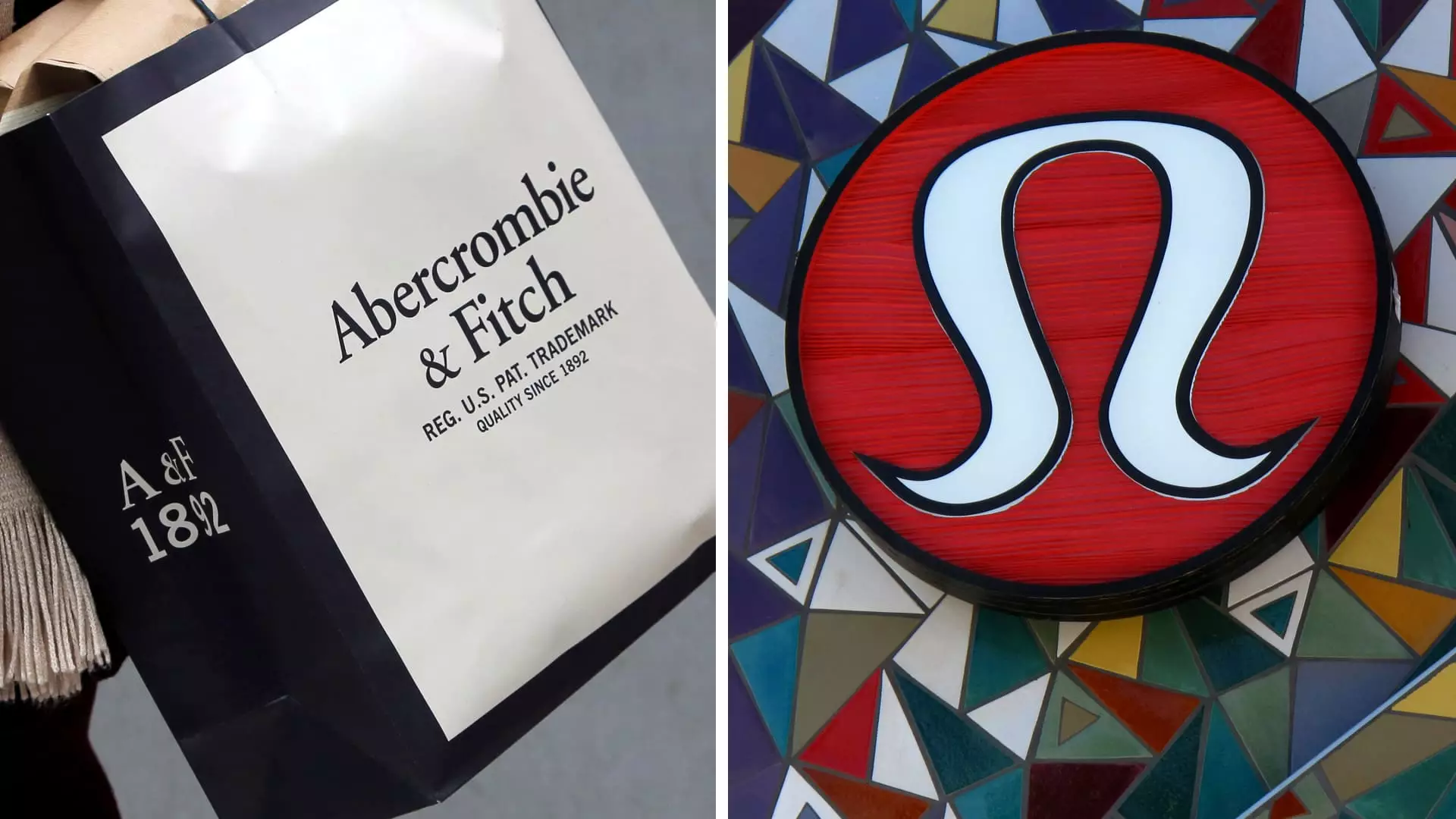The holiday shopping season is often seen as a defining moment for retailers, offering them the chance to recover and bolster their annual revenues. Recent reports indicate that many big-name companies have experienced better-than-anticipated early results. Yet, despite this apparent success, their stock prices have slumped, creating a paradoxical situation where great performance does not guarantee investor satisfaction. This article aims to explore the implications of these findings on the retail sector and the underlying factors contributing to the current market sentiment.
Retailers such as Lululemon, Abercrombie & Fitch, and American Eagle have raised their forecasts for fourth-quarter earnings, fueled by strong consumer engagement during the crucial holiday season. For example, Lululemon anticipates sales growth of approximately 11% to 12%, an increase from previous estimates. Additionally, their earnings per share predictions have also risen, reflecting management’s confidence in their product offerings, particularly during the high-stakes holiday shopping period.
However, despite these optimistic projections, stock prices for these corporations have declined by more than 5% on average. Investors are increasingly scrutinizing the sustainability of growth amidst a generally volatile macroeconomic environment. The initial positive reactions to sales reports have been tarnished by broader concerns over factors such as inflation, changing consumer behavior, and the potential for economic downturns.
Abercrombie & Fitch’s situation exemplifies this investor skepticism. While the company has slightly increased its growth outlook, it still pales compared to the astonishing 21% growth it reported during the previous holiday season. Investors are now facing a landscape that suggests maturation in Abercrombie’s growth trajectory. The gap between current expectations and the historic benchmarks could be fueling a bearish sentiment, as expectations for significant returns begin to realign with more modest growth forecasts.
CEO Fran Horowitz’s assertion that the company will concentrate on boosting profit over revenue growth illustrates a strategic pivot. The desire to enhance profitability could fundamentally change the risk-reward equation for shareholders. As the company aims for sustainable growth rates, the sentiment among investors may tilt away from aggressive performance metrics toward a more conservative evaluation of long-term profit margins.
Macy’s disappointing sales figures contrast sharply with the optimism surrounding other retailers. The department store forecast is not only disappointing but also indicative of broader challenges facing traditional brick-and-mortar retailers. The growing dominance of e-commerce giants has effectively raised the stakes for retailers that struggle to adapt. As Macy’s reported potentially falling short of expectations, their stock tumbled, highlighting the disparity between companies that leverage growth in e-commerce and those that rely predominantly on physical retail.
Urban Outfitters also presented a mixed bag of results, reporting a 10% rise in net sales, although it fell short in certain key segments. The disparity in performance among different brands raises questions about their individual strategies. Retailers must adapt to the evolving landscape, as evidenced by Urban’s significant reliance on online sales to boost performance. As consumers increasingly gravitate toward convenience and digital shopping channels, retailers that do not evolve may risk lagging behind.
Looking forward, the National Retail Federation has projected modest sales growth of between 2.5% and 3.5% for the holiday season. While year-over-year growth appears encouraging, inflation factors illustrate how real growth may be negligible. The Mastercard SpendingPulse data indicating a 3.8% rise in retail sales may initially seem promising, but when accounting for inflation and economic pressures, the growth may not hold up under scrutiny.
These shifting dynamics prompt a crucial reevaluation of consumer sentiment. Are shoppers prioritizing value over brand loyalty? As the retail environment elevates competition among brands, understanding consumer behavior becomes critical. Retailers must take this into account as they plan their future strategies, ensuring they can not only meet immediate consumer needs but also attract new loyal customers amid fluctuating economic conditions.
While early holiday results illustrate some brighter spots for prominent retailers, the prevailing stock market reaction suggests a cautious optimism tinged with skepticism. Given the complex interplay of economic factors, changing consumer preferences, and the volatility of stock markets, it remains essential for retailers to navigate these challenges adeptly to sustain long-term financial health and shareholder satisfaction.

